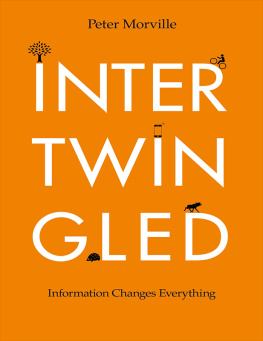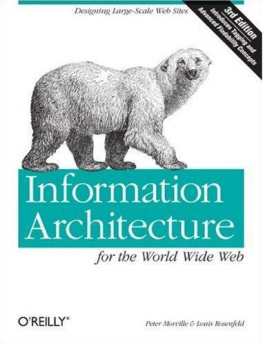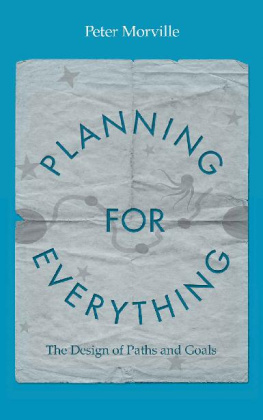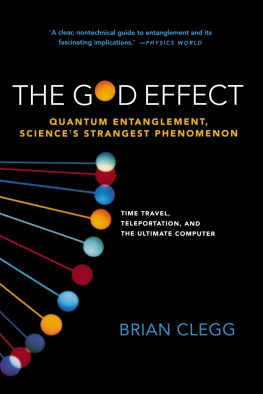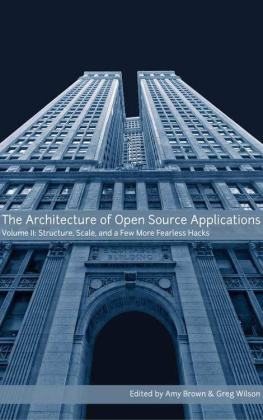
Intertwingled
by Peter Morville
Intertwingled
Information Changes Everything
by Peter Morville
2014 Peter Morville
All Rights Reserved
Advance Praise for Intertwingled
Intertwingled is a meditation on the connectedness of everything. From language and ontology to culture and strategy, Peter takes us on a journey that reveals how a simple change in what we take for granted can send ripples that reach far beyond our awareness.
Irene Au, Operating Partner, Khosla Ventures
A delightful, surprisingly practical book: an insiders guide to the best in design, culture, and complex systems.
Vienna Teng, singer, songwriter, pianist
In the information age, we are all information architects, says Morville in this fresh and fascinating take on the field he played a huge part in creating.
Jeffrey Zeldman, author, Designing with Web Standards
MIND BLOWN OPEN, rearranged, and reshaped. Its like stepping through a door to a shifted universe thats richer, deeper, more connected.
Kathy Sierra, author, Badass: Making Users Awesome
Preface
People keep pretending they can make things hierarchical, categorizable, and sequential when they cant. Everything is deeply intertwingled.
Theodor Holm Nelson
In 1974, Theodor H. Nelson wrote and self-published a book with two covers. The first, Computer Lib , is an introduction to computers that notes any nitwit can understand computers, and many do. The flip side, Dream Machines , is an invitation to the future of media and cognition that states everything is deeply intertwingled. This prescient codex served as a bible to many pioneers of the personal computer and the Internet.
In 1994, I started my career as an information architect. I was driven by the belief that we can make the world a better place by organizing its information. Together, Lou Rosenfeld and I built a company and wrote a book that helped to establish the field of information architecture. Ever since, Ive been blessed with opportunities to do what I love. But a few years ago, I began to sense a glitch. My ability to help my clients was limited by our narrow focus. This was partly my fault for defining myself as a specialist, but I eventually came to see that this problem of reductionism is endemic to our culture.
In 2014, I wrote this book to show Ted Nelsons insight that everything is deeply intertwingled is more vital than ever, and to argue we can get better at getting better by changing how we organize information, not only on websites, but in our minds. It was not an easy book to write, and if its reading makes you uncomfortable, then perhaps it has met my ambition.
Organization of This Book
This book should be read in linear style from start to end. Its divided into chapters, but of course they are all intertwingled.
Explores the nature of information in systems from the wolves of Isle Royale to Uber in Silicon Valley. Explains why systems thinking is essential if we hope to create sustainable change.
A deep dive into classification and its consequences. Flows from organizing for users to organizing ourselves (governance). Covers embodied cognition, meditation, and moral circles.
The history of links from hypertext and navigation to planning and prediction. Explores self-justification and the cobra effect. Blames music and synesthesia on the architecture of the brain.
Offers models for understanding and changing organizational and national culture. Covers ways of knowing from authority to intuition and ways of changing from tiny habits to positive deviance. Features a thick description of design ethnography.
A journey beyond the limits of understanding and growth that includes iatrogenics, teleportation, and meatballs. Tackles big fish from pollution and corruption to extinction and collapse. Explains why our myths are the root cause and our only hope.
Acknowledgments
Abby Covert, Andrew Hinton, Christian Crumlish, Richard Dalton, and Noriyo Asano read the manuscript and provided generous advice and support. Jeffery Callender and I worked together to design the cover, interior layout, and illustrations. The symbols and icons are licensed from The Noun Project. Andrea Resmini, Bob Royce, Chris Farnum, Christina Wodtke, Dan Cooney, Dan Klyn, Dave Gray, David Fiorito, Whitney Hess, Heidi Weise, Jane Dysart, Jason Hobbs, Jorge Arango, Joseph Janes, Livia Labate, Louis Rosenfeld, Peter Merholz, Thomas Wendt, and Simon St. Laurent, and are a few of the folks who inspired and helped me along the way. Last but not least, Id like to thank Malcolm, Judith, Paul, and Ros for being in my circle; Susan, Claire, and Claudia for intertwingling my life with love; and Knowsy for our long evening walks.
Chapter 1, Nature
When we try to pick out anything by itself, we find it hitched to everything else in the universe.
John Muir
Im standing on an island beach in the northwest corner of Lake Superior. After nine hours in my Honda Civic and six hours aboard the Ranger III, my backpack and I have been transported into the wilderness archipelago of Isle Royale National Park. While this rugged, isolated refuge is among the least visited of our national parks, its well-known among ecologists for its wolf and moose, subjects of the longest continuous study of a predator-prey relationship in the world.
Of course, Im not here as a scientist. Im here to hike. But I was drawn to this place by the story of its ecosystem. When the study began in 1958, well-established mathematical models of predation described how the populations should rise and fall as part of a cyclical, co-evolutionary pattern that maintains the balance of nature. For the first few years, things proceeded as expected. But the ecologist, Durward Allen, had the foresight to persevere beyond the normal period of observation, and the dramatic, dynamic variation that unfolded was an illuminating surprise.
The more we studied, the more we came to realize how poor our previous explanations had been. The accuracy of our predictions for Isle Royale wolf and moose populations is comparable to those for long-term weather and financial markets. Every five-year period in the Isle Royale history has been different from every other five-year period even after fifty years of close observation.
This is a lesson in humility, and a sign of whats to come for those who labor in todays high-tech ecologies. In user experience and digital strategy, theres a lot of talk about ecosystems that integrate devices and touchpoints across channels. While this is a step in the right direction, our models and prescriptions belie the true complexity of our information systems and the organizations they are designed to serve.
Recently, while I was consulting with a Fortune 500 that does over $2 billion a year in online sales, one of my clients explained that over the years hed seen lots of consultants fail to create lasting change. They tell us to improve consistency, so we clean up our website, but the clutter soon comes back. We keep making the same mistakes, over and over.
This infinite loop to nowhere results from treating symptoms without knowing the cause, a bad habit with which were all too familiar. Part of our problem is human nature. Were impatient. We choose immediate gratification and the illusion of efficiency over the longer, harder but more effective course of action. And part of our problem is culture. Our institutions and mindsets remain stuck in the industrial age. Businesses are designed as machines, staffed by specialists in silos. Each person does their part, but nobody understands the whole.
The machine view was so successful during the industrial revolution, we find it astonishingly hard to let go, even as the information age renders it obsolete and counterproductive in a growing set of contexts. Its not that the old model is all wrong. Were not about to throw away hierarchy or specialization. But our world is changing, and we must adjust.
Next page
